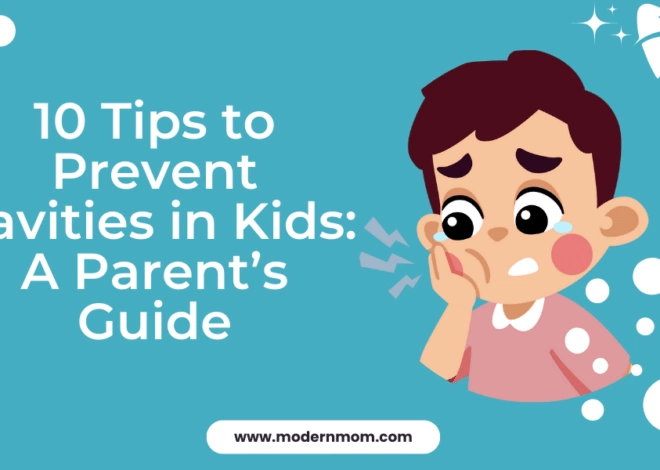There is one thing all expectant mothers have in common: Each and every one wants the healthiest start for her unborn baby.
If you are pregnant, you can speak up for your child now, before he or she is born. You will not think twice of defending your child against bullies on the playground or in school later – so start now by defending them against bullies before he or she is born. The bullies in this case are belittling and dehumanizing maternity care, fear or scare tactics used to force consent to medical treatment, and non-evidence based, unnecessary, and even harmful medical intervention.
You Have the Right to Hire (and Fire) Your Health Care Provider
Though not often considered, interviewing your health care provider is one of the first steps you can take to ensure the health and wellbeing of you and your unborn child.
Why? Because giving birth in the US is risky. “The United States has more neonatologists and neonatal intensive care beds per person than Australia, Canada and the United Kingdom, but its newborn mortality rate is higher than any of those countries,” reports the annual State of the World’s Mothers report. Even though the US spends more money on maternity care, it has higher death rates than 40 other countries, including Cuba, the Czech Republic, and Slovenia.
Birth advocates like Ina May Gaskin and Peggy O’Mara agree on the undeniably poor birth outcomes in the United States today. What’s worse is the US did not arrive at such poor birth outcomes due to lack of medical intervention, but possibly because of its misuse or overuse.
“For all U.S. women, the maternal death ratio is almost 5 times as high as it should be, and for African American women, it is more than 10 times what it should be,” says legendary midwife Ina May Gaskin.
Early in the 1900’s women lost a basic human right: that of giving birth on their own terms. Since then, women have been fighting a steady uphill battle for their right to reclaim birth.
Dr. Christiane Northrup discusses the loss of the birth experience, as well as the unacceptably high death rates of mothers and their newborns, in her article A Woman’s Nation: Reclaiming Your Right to Birth Right. In it, Dr. Christiane Northrup writes “part of reclaiming your rights as a laboring mother is to interview potential candidates for the right to “catch” your baby.”
Birth Speak
The first step in finding a provider that will respect and empower you as an expectant mother is listening to the vocabulary he or she uses to describe pregnancy and birth. A provider who uses words you cannot understand (and then doesn’t explain them), describes pregnancy and birth as a medical condition rather than a natural one, or that uses outdated terms like “delivering your baby” or “episiotomy” should send up red flags.
By contrast, a compassionate provider who puts your needs first will explain, with a caring bedside manner, all prenatal care and labor and delivery (L&D) terminology in terms you can understand. For example, my provider immediately clarified that she did not “deliver” babies. She built up my confidence at each visit, reminding me I was the one who would ultimately deliver my baby. She was there to simply support me and “catch” my baby. Expectant moms, you, not your doctor, will deliver your baby. This small detail is an important first step to putting birth back in the hands of women.
Finding Your Baby Catcher
In an attempt to do what they think is best for their baby, women end up settling for less than the best. Women often settle for a provider because he or she is nearest to their home (and therefore thought to be the safest) or because everyone else uses them.
However, it is dangerous to assume that just because “everyone else goes there they must be good.” The other misconception that deceives women is that “doctors know best” and therefore must be the experts at birth and should not be questioned.
However, the best ob/gyn’s will remind you that they are trained surgeons who need to be available for performing surgery and attending high risk births. Contrarily, in the US today most births are attended by ob/gyn’s even though most births are not high risk. This stretches physicians thin, when midwives are well qualified to attend birth and are actually the trained childbirth experts. Because midwives are not trained in surgery they can focus intensely on the nuances and details of compassionate and caring prenatal care, labor and “baby catching”, as well as postpartum care.
If you are fearful of birth or uncertain about what to expect, you can reclaim your right to dignified, empowered birth simply by exercising your right to hire (and fire) your health care provider.
For more information about reclaiming birth, read Dr. Northrup’s article here. Her statistics and history on birth are both accurate and poignant.
My Story
When I was pregnant with my first child, I interviewed two ob/gyn practices and a midwife before I found the right one. Mary, my midwife, was a wonderfully compassionate and thoughtful caregiver who “caught” all three of my sons when I gave birth. (Well, technically my husband caught the last one while she sat by my side and coached him).
There is a catch (no pun intended). Mary was almost 2 hours away from my home. And, she worked under a physician practice in a regional medical center. However, undeterred I drove the 1 hour and 45 minutes to her office for all my care. I interviewed the hospital and met the physicians in the practice, who turned out to be very mother-baby friendly and respectful of birth plans.
Don’t be afraid to drive to the next town over to give birth. I did not let distance from my provider nor fear of potential intimidation by the medical profession (which is a common fear of anyone put in the place of being a “patient”) stop me from seeking out the best possible care.
For me, that care was simple: I drove those two hours (or rather my husband drove, while I was in hard labor) in order to birth on my own terms (which for me meant nothing more than using basic holistic pain management measures and a midwife).
The good news is in the US today, as mothers become discerning individuals who are informed about birth and their rights and not afraid to question authority, that fantastic combination (of midwife and baby-friendly facility) is becoming increasingly available.
And if you are considered a “high risk” pregnancy, there is now a movement to certify Baby-Friendly Hospitals, which would likely be a facility where you would find a wonderful caregiving ob/gyn practice that would respect your wishes while also providing a high level of compassionate maternity care.
The Top 10 Questions to Ask Your Potential Baby Catcher:
1. What is your induction rate & how do you determine when induction is necessary?
Induction rates have more than doubled in the last 15 years, and without improved maternal or infant outcomes. In fact, the C-section rate and maternal and infant mortality rate has risen during that same period of time, which should raise eyebrows as to the benefit vs. risks of induction.
2. What is your C-Section rate?
The WHO (World Health Organization) recommends no more than 5-10% rate, with anything more than 10% being harmful. Yet in America the C-section rate is 33% which greatly increases the risk of infant mortality.
3. Do you or the hospital require external fetal monitoring (EFM)?
EFM has not been shown to improve birth outcomes since its inception in the 1970’s. In fact the only thing it has been responsible for is increasing C-section rates.
4. During labor, how would you determine if my baby is in distress?
What would be their criteria to determine if a C-section is warranted? If EFM is their primary method then I would raise a red flag. Your entire birth could likely be monitored solely by an electronic device and telephone, and not by attending to you and the baby. Using EFM as the sole determinant of distress also excludes the mother and her valuable body wisdom and feelings, from the entire birth process.
5. Will you attend my birth, or will I get whoever is on call?
A midwife usually sees you for every visit AND attends your birth (the whole birth and not just the last 5 minutes). Realize that if you are in a large practice (of docs or midwives), you will see a different practitioner every visit and likely not receive the personalized care you deserve. You cannot ensure that the caregiver you end up will be one you mesh with, or one that even respects you or your birth plan.
You deserve someone who is dedicated to your birth and not multi-tasking with one foot out the door because it is a late night, weekend, or holiday. Another curious statistic about the use of induction is as its use increased, the number of weekend and late night births decreased. Is this a coincidence or was the technology of induction being abused for the providers’ convenience? Certainly, artificially inducing labor based on scheduling convenience is not in the best interest of mother or baby.
Giving birth is one of, if not the biggest moment in your life. You do not want to share that moment with just anyone, nor entrust its outcome to a person you barely met or who would rather be at home watching the “big game” instead of helping you experience perhaps the biggest moment of your lifetime.
6. What is the longest labor you have attended? What was the outcome?
You would like to know this information because: 1) The answer will tell you if how involved they are in actual labor and delivery (most doctors cannot be involved because they are stretched too thin trying to see their other patients or they are not willing to be bothered until time to actually “deliver” the baby). 2) Their answer will also clue you in as to how long they will let you labor on your own before disqualifying your body as incapable of giving birth without medical intervention.
You do not want an impatient provider who sees your labor and delivery as an inconvenience to their busy schedule. One who demonstrates impatience in answering this question could likely use intimidation or fear tactics to scare you into accepting unnecessary medical intervention during labor.
A sad fact I discovered during my interviews with mothers is that those who did not interview their caregiver or hospital beforehand reported being scared into or even forced into consenting to medical interventions during birth. This is why having a birth partner, whether a family member, friend, or doula, is important to have by your side at office visits and during labor. Your labor coach should be your advocate, well versed with your birth plan, and should understand what intervention you will receive and why. They don’t supersede medical care, but when you are in the “zone” of labor, you need a person who can understand what to expect, what your rights are, and is on board with you and your baby’s plan of care.
7. What is the longest labor you typically allow before suggesting alternative intervention, such as a C-section? Before my water breaks? After my water breaks?
My midwife and the nursing staff were big supporters of my birth plan. They continuously encouraged and supported me throughout the labor. My first labor was 36 hours, and yes, I had intermittent (not continuous) EFM and still managed to have a natural birth.
By contrast, I have interviewed many mothers with the same story as mine: a long, protracted labor that was not progressing. However their ending is vastly different than mine but with an all too common scenario happening across the US today. After only being allowed to labor for about 12 hours, they all received intervention: either an “emergency C-section” or induction for failing to progress. Or worse, their membranes get stripped or their water broken (without their consent) so the provider can put a time limit on their right to labor because of risk of infection.
8. Can I position myself for the actual birth?
Some hospitals and many health care providers will “require” you to be in a lithotomy position (flat on back, feet in stirrups). This position is well accepted is perhaps the most disadvantageous biomechanical position for birthing, as it closes down the pelvic outlet (decreases the opening size) and creates a position where the mother must push uphill. Yet, there are hospitals and providers who still force women into this antiquated and clearly scientifically unsupported position.
You have the freedom to move around during birth. Even if you must have an IV or are being induced, the nursing staff should be able to help you be mobile. You do not have to be confined to bed, as this is a terribly difficult and painful way to labor.
Ask any childbirth educator or midwife and they will tell you that birth positioning is highly personal for each woman, based on the baby’s position and the mother’s pelvis. Every mother should be given the freedom to move into a position that is most comfortable and conducive to birth.
Squatting, all fours position, side lying, all of these and more are options for birthing. If your provider says you must be in the lithotomy position to give birth, or tells you (falsely) that it is the “best position for birth,” run away. Fast.
9. What is your episiotomy rate?
(This number better be low, or your eyebrows should raise rather high) What will you do to decrease the need for an episiotomy?
A caregiver who believes in episiotomies and speaks about them casually means you will likely be cut during birth. I have had too many female patients come to me suffering from longstanding chronic pain, including sexual dysfunction and fecal and urinary incontinence, because they either consented to an episiotomy or their doctor cut them without their permission. Read how ACOG officially changed its stance on episiotomies in 2006.
10. What is your unmedicated and/or uncomplicated birth rate?
Restated: How many natural or minimally invasive births do you attend each year? Over 80% of women receive medical intervention, and it is well founded that as medical intervention goes up, favorable birth outcomes go down.
Research in many countries, including the US, show midwives have the lowest medical intervention rates, and with very good outcomes. For example, Ina May Gaskin’s C-section rate, as a midwife who at the time of this statistical calculation had “caught” over 3000 babies, was under 2%. Compare this to the whopping national average of 33%.
In other words, realize that if you decide to choose an ob/gyn, there is a high probability that he or she has never even witnessed a regular birth. This means that it is quite possible they do not know how to, or will be impatient with, managing a regular birth.
11. Bonus Questions: Do you break the “bag of waters” very often? If so, why?
Breaking the bag of waters is usually unnecessary as it will break on its own. And breaking them prematurely can make labor harder and much more painful. In the event that C-section should become necessary, how will you work to support breastfeeding after the surgery? What criteria do you use to determine if I am a “high risk pregnancy?” This last question is important because a provider should look at your medical history and you as an individual, as well as multiple criteria (and not just age, for example) in order to determine risk.
*Caution: A health care provider should always welcome your questions, and should never scoff at them, belittle, or demoralize you. A health care provider who cannot or refuses to answer your questions is one that should be crossed off your list. It is a strong indicator that you will likely not be in charge (fully informed of options) or even respected during your birth.
If you can get through this list of questions with your health care provider, and you like all the answers, be glad! You are an informed woman in charge and on your way to an empowered, joyous birth.
Congratulations on taking control of your health and your birth.





